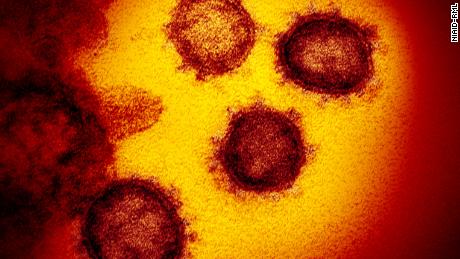Critics said the flu kills more than coronavirus. Why that's not a fair comparison -- and now, it's not even true
Updated 1937 GMT (0337 HKT) May 1, 2020
(CNN)It's a popular argument heard at protests denouncing state shutdowns, fueled by those who say news outlets are overreacting to coronavirus:
The flu kills more people than coronavirus. Why shut down the economy for this?
But the US death toll from coronavirus this year has exceeded 62,000, surpassing the high-end estimate for flu deaths since October. And coronavirus has killed at a much faster rate than the flu, claiming all those lives in just three months.
Here are several reasons why coronavirus is more dangerous than the flu -- and why extra precautions are needed:
Coronavirus is much more contagious than the flu
Research shows a person with the flu infects an average of about 1.28 other people.
But without mitigation efforts such as stay-at-home orders, a person with novel coronavirus infects an average of about 2 to 3 other people.
And this coronavirus is so new, it's not clear whether it would dissipate in summer, or by how much. But the fact that it kept spreading in the Southern Hemisphere during its summer months suggests warm weather won't slow its spread.
Coronavirus has killed at a much faster rate
From October 2019 to early April 2020, the flu killed an estimated 24,000 to 62,000 people in the US, according to the US Centers for Disease Control and Prevention. Those numbers are preliminary, and the CDC said it stopped updating its preliminary estimates for this flu season on April 4.
If 62,000 people died from the flu between October 1 and April 4, that means the US had an average of about 331 flu deaths a day.
By contrast, coronavirus killed more than 62,850 people in the US from the first known death in February through the end of April, according to data from Johns Hopkins University.
So from February 6 through April 30, an average of more than 739 people died per day from coronavirus in the US.
Coronavirus can be spread for many days without symptoms
With the flu, the incubation period is relatively short. People typically start feeling sick one to four days after infection, with symptoms often showing up within two days, the CDC says.
That means people who get sick from the flu will know they're sick fairly soon and will likely stay home, avoiding contact with others.
But the incubation period with coronavirus is about three to 14 days, and "symptoms typically appear within four or five days after exposure," according to Harvard Medical School.
"We know that a person with COVID-19 may be contagious 48 to 72 hours before starting to experience symptoms," Harvard experts write. "Emerging research suggests that people may actually be most likely to spread the virus to others during the 48 hours before they start to experience symptoms."
If true, Harvard said, "this strengthens the case for face masks, physical distancing, and contact tracing, all of which can help reduce the risk that someone who is infected but not yet contagious may unknowingly infect others."
It's easy for asymptomatic carriers to infect others, said Anne Rimoin, an epidemiology professor at UCLA's School of Public Health.
"When you speak, sometimes you'll spit a little bit," she said. "You'll rub your nose. You'll touch your mouth. You'll rub your eyes. And then you'll touch other surfaces, and then you will be spreading virus if you are infected and shedding asymptomatically."
You can get a flu vaccine but not a coronavirus vaccine
Experts say the number of flu deaths could be drastically reduced if more people got flu shots. Even if you get a flu vaccine and later catch the flu, the symptoms are usually less severe.
Yet about half of Americans don't get vaccinated, including most children who die from the flu.
But with coronavirus, there's no option to get a vaccine. At the earliest, it'll be months before a coronavirus vaccine might become publicly available.






















